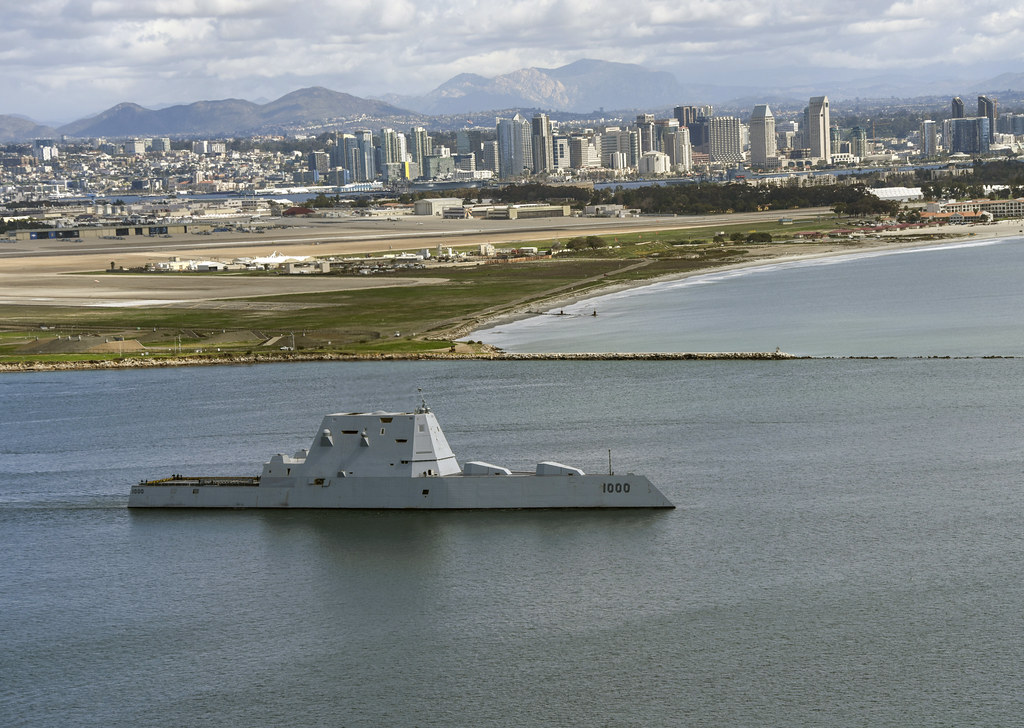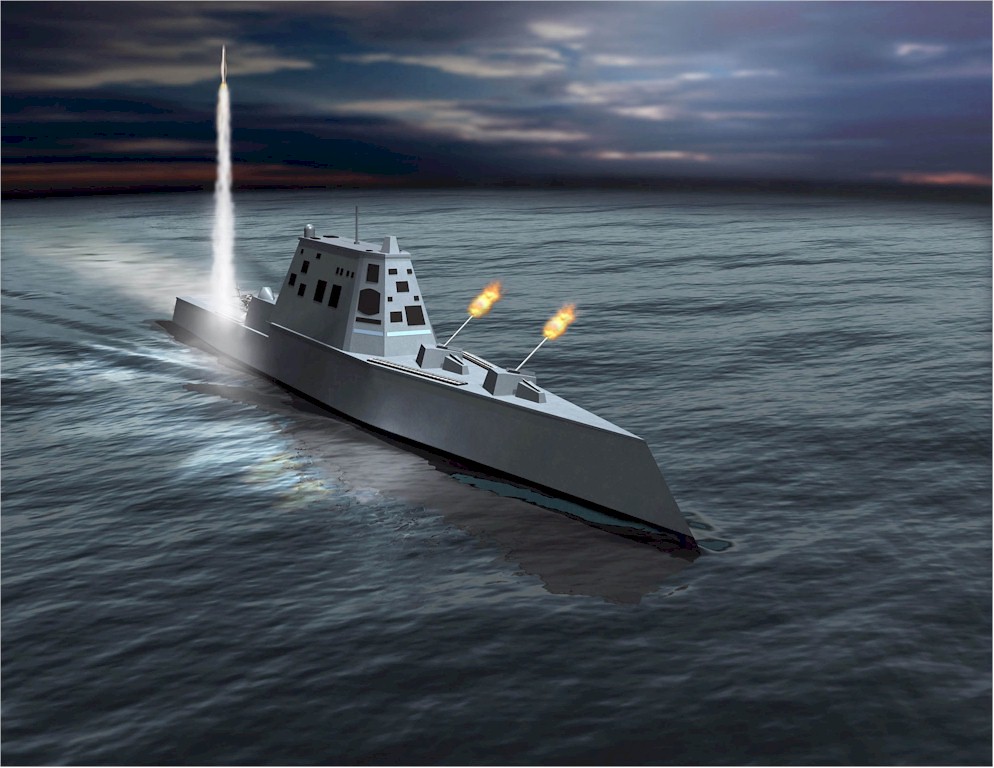
The United States Navy’s USS Zumwalt (DDG 1000), a behemoth of maritime warfare, encapsulates both the visionary ambitions of naval technology and the tumultuous path of cutting-edge military assets.

With a price tag of $4.4 billion, the USS Zumwalt is the largest destroyer in the world and the lead ship of its class, which the Navy initially hailed as a significant leap forward in surface combatant design.

The Zumwalt-class destroyers emerged from the Surface Combatant for the 21st-century program in the mid-1990s, conceived to pioneer a new era in naval operations.

At the heart of the Zumwalt’s innovation was the “knife-like” bow and a wave-piercing tumblehome hull designed to bolster stability in heavy seas.

This 600-foot vessel’s advanced gun systems were expected to revolutionize naval fire support with a capability to strike targets up to 83 miles away. The Zumwalt-class was poised to excel in a range of missions, from power projection and sea control to special operations support.

Despite these lofty aspirations, the Zumwalt-class destroyers have faced a barrage of criticism and operational setbacks, leading some experts to label them as a “failed ship concept.”

Shortly after the USS Zumwalt’s commissioning in 2016, it suffered a breakdown in the Panama Canal. The second ship in the class, the USS Michael Monsoor, faced similar fates with trials failures.

A report by Military Watch Magazine highlighted the Zumwalts’ “poorly functioning weapons, stalling engines, and an underperformance in their stealth capabilities, among other shortcomings.”

The Zumwalts’ woes extend to their armaments; the long-range land-attack projectile guided shells they carry have been canceled due to their exorbitant cost—approximately $800,000 each, akin to the price of a cruise missile. The ships also lacked vital features such as anti-ship missiles, anti-submarine torpedoes, and long-range area-air defense missiles.

In what seems like a relentless pursuit to salvage the program’s prestige, the U.S. Navy has been exploring a myriad of options to repurpose the Zumwalt-class ships.

The latest of these efforts, as reported by USNI News, is to retrofit the destroyers with hypersonic missiles by 2025. Adm. Mike Gilday conveyed a resolute focus to “field that system on the Zumwalt destroyers so that we can prove it and field it fast and then scale it.”

Despite the challenges and the label of a “failed ship concept,” the Department of Defense has not given up on the Zumwalt-class destroyers.

With additional funds allocated for modernization in the closing days of 2023, there’s anticipation around the potential incorporation of Conventional Prompt Strike (CPS) hypersonic missile systems. Analysts predict that such advancements could give these ships a renewed strategic edge.

The Zumwalt-class destroyers remain a testament to the dynamic nature of military technology development. With their advanced capabilities and a renewed push for modernization, these ships may yet fulfill the visionary role they were designed for, showcasing the Navy’s adaptability and determination to advance its fleet into the future of maritime dominance.

However, the true measure of success for the Zumwalts will only reveal itself as the Navy continues to test, evaluate, and refine these colossal symbols of American naval power.
Relevant articles:
– A $4.4 billion US destroyer was touted as one of the most advanced ships in the world. Take a look at the USS Zumwalt, which has since been called a ‘failed ship concept.’, Yahoo
– Zumwalt-Class Stealth Destroyer: Why the Navy Had to Cancel It, The National Interest
– USS Zumwalt, All Hands Magazine (.mil)

